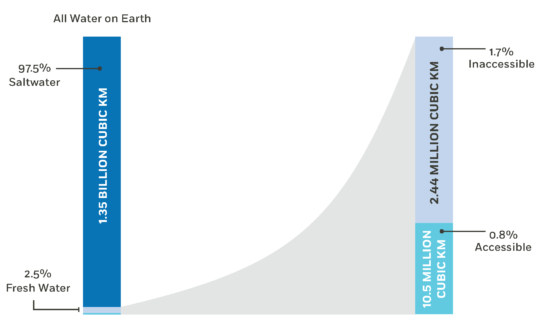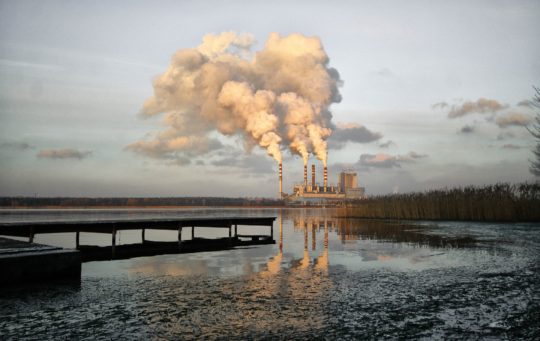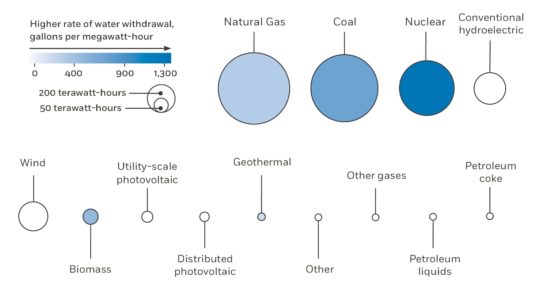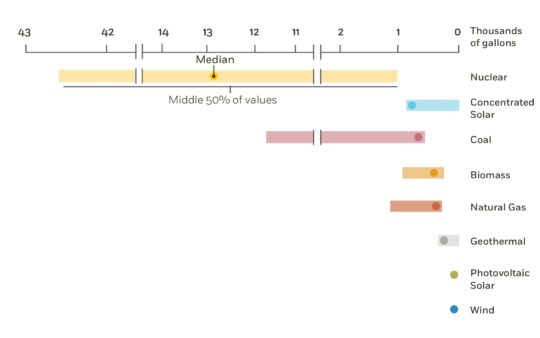The Truth About Wind, Sun, and Water
Renewable energy can help solve one of this generation’s escalating global crises.
By now, the benefits of renewable energy have long been established. Most people recognize wind and solar power as clean, zero-emissions energy generation sources, producing no additional greenhouse gases, NOx, SOx, or other toxic mineral solids.
Perhaps the most familiar are the environmental benefits—wind and solar emit no carbon, and because of their fuel cost (zero), they’re dispatched by the grid operator to provide energy more often than older, more expensive, and often inefficient coal or gas technologies.

Then there are economic advantages, including significant long-term investment in rural communities, utility bills lowered by cost-competitive power, and a heightened demand for U.S. steel and other industrial commodities.
But an oft-forgotten benefit of renewables could be critical in alleviating one of this generation’s escalating global crises: access to fresh water.
Fossil fuel energy generation is the largest consumer of all fresh water in the United States.

Think about your own home’s water use. Powering a single U.S. home with even the most efficient coal plants draws 6 million gallons from lakes, rivers, aquifers, and groundwater wells each year. But most coal units, the majority of which were constructed in the 1970s, consume water at drastically higher rates. That inefficiency means each home requires 24,000 tanker trucks of water annually—or more than 7.5 million kegs of beer, if that’s more your style. That’s a lot of wedding receptions.
Although coal is a still a significant source of power generation, in recent years, natural gas has usurped a larger share of the fossil-energy economy. Natural gas, responsible for 6.9 trillion gallons of water withdrawals each year, combined with coal—36.5 trillion gallons—represents a massive, but most important, unsustainable, amount of water used to turn on our lights.
So how much is 43 trillion gallons of water? Consider Lake Erie. In the United States alone, the total amount of water used for electricity generation from coal and natural gas is equivalent to draining Lake Erie every three years. The Great Lakes represent more than one fifth of Earth’s fresh surface water. And less than 1% of Earth’s fresh water is even accessible—most is tied up in glaciers.

More Wind, More Sun, More Fresh Water
Southwest Virginia, like many cross sections of rural America, has seen a substantial shift in its local economy. Coal production in the state has fallen by more than 70% from its peak in 1990. Once-bustling towns are seeking opportunities for revitalization. But there’s hope. In our lifetimes, a definitive solution to this crisis has been tested, passed muster, and begun rapid deployment across the country.

Wind and photovoltaic solar generation require no water to produce electricity. And every time the grid dispatches power from renewable projects, fossil fuel units sit idle, no longer exhausting our precious sources of fresh water—at least for the moment.
The displacement of fossil fuel generation has ancillary benefits too. Coal and natural gas units release water vapor, a greenhouse gas and contributor to global warming, into the atmosphere. While water vapor has a shorter residence time in the atmosphere than methane or carbon dioxide, it’s no less harmful.
A Stanford University study observes that increases in water vapor make present particles deadlier by allowing other gases to dissolve in those particles. Preventing withdrawal therefore reduces the number of particulates latching on to liquid water from fossil smokestacks, and that, in turn, impacts localized precipitation and reduces the potential deposition of carcinogens in communities across the United States.
But again, there’s hope. If Apex’s 3 GW portfolio of operating renewable projects replaced an equivalent amount of fossil fuel facilities, 12 trillion gallons of water withdrawals would be avoided annually.
In coal-powered states, Apex’s renewable pipeline can have an even more direct and significant impact. In Virginia, the 75 MW Rocky Forge Wind and 80 MW Dragonfly Solar have the potential to offset more than 8 billion gallons of water withdrawals from fossil fuels.
Imagine the impact as Apex’s market-leading, 16 GW development pipeline begins to come online and replace old coal and natural gas power plants.
Suddenly, this crisis doesn’t feel so daunting.


